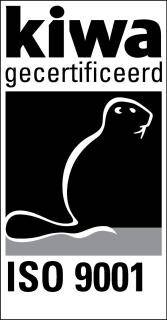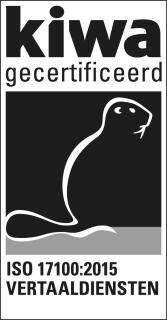
Setting up a multilingual website, this is how you do it!
You’ve made the decision. Increasing business with foreign countries or the ambition to export abroad has made you decide to set up a multilingual website. This way, you hope to be able to better serve your current customers and to better connect with the intended target group. Is simply translating your web texts enough to create a multilingual website? Or is there more to it?
Your company’s website is your business card. In many cases, this is the first thing your future customer will see about you. That is why it is very important to leave a good impression. You can achieve this by, among other things, setting up a well-maintained website with strong texts. This blog explains what you should keep in mind when translating your current website:
- How will you translate the texts?
- The structure of your multilingual website
- What about SEO?
- Copying and filling pages
1. How will you translate the texts?
Once it has been decided to create a multilingual website, the next step is to determine how you will translate the texts on the website. Do you have sufficient in-house knowledge of the target language to translate the texts yourself? Do you opt for the fast, but perhaps less reliable solution and let a translation machine do the work? Or do you opt for the professional approach and engage a translation agency?
Each option has its pros and cons. Translating the web texts yourself can be a relatively cheap solution, although you do spend a lot of time translating the texts and you must, of course, have specific language skills. A translation machine, on the other hand, is fast and cheap. However, the quality will often be considerably less. A big disadvantage of translation machines is that the texts are translated literally, without looking at the context. These careless translation errors come across as unprofessional and won’t benefit people’s first impressions of you.
Engaging a professional translation agency ensures high-quality texts. Our translators are native speakers who know the target language for your translations. They know the nuances of the language and can therefore guarantee high-quality translations. You will have to send the translation agency your web texts in an export so they can get set to work. AgroLingua likes to use one of the following exports: Word, Excel, XML or XLF. The latter two can often be exported by your website developer.
2. The structure of your multilingual website
When creating a multilingual website, it is often not necessary to translate all texts. For example, news items from a few years ago are not relevant for the (new) target group abroad. Therefore, check which content does need to be translated before you engage a translation agency and create a good content strategy for your bilingual website.
It may be useful to first draw up a plan of the website structure in the new language. You can do this very easily in a document or using a brainstorming tool. This gives you insight into your multilingual website and you also know which pages you need.
The items in the menu should also be translated to the target language of your multilingual website. In addition, translations of call to actions (CTAs) and forms are elements that are easily overlooked.
Bonus tip:It is easier to set up a multilingual website than to make an existing website multilingual. Are you a (starting) company with international ambitions or do you have plans to revamp your website? Then consider implementing a multilingual version.
3. What about SEO?
You current website already makes you easy to find in the search engines. Because of the content you have created in the past, you have already secured certain positions for certain keywords. You will have to secure these positions in the other language. That is why it is important to take SEO into account immediately when translating your texts.
Extra SEO tips for your bilingual website- Make sure you know which keywords you need in the other language before you have your texts translated. These keywords provide the basis of your results in the search engines and you can pass them on to the translator of your website. The search terms for which you are found in Dutch may not catch on at all abroad, for example, due to language or cultural differences. If that’s the case, all the effort to carefully translate your web content has been wasted. That would be a shame! A good translator can also contribute ideas when it comes to keywords. If he or she is a native speaker, the translator is aware of synonyms or other words that are more popular with the population.
- If you already have certain ideas about the keywords you want to use and their placement in the texts, then give the translator clear and unambiguous instructions to translate your texts. This way, the translator can take your wishes into account and write good SEO texts in the target language.
- When you send your texts to the translator, don’t forget to also send the meta information of your web pages. This includes the meta title and the meta description, but also the ALT texts of your image and the URL of the page.
4. Copying and filling pages
When the translator has translated all supplied texts, you can start filling your multilingual website. The easiest way is to start with the navigation of the different languages. Create a separate item in your navigation for each language. You can then attach the translated website so your visitors can switch to the relevant language with a simple click. You can attach the correct translations of the website to the ‘language navigation’ you have just created.
Creating these items works differently for each website software. If you’re not sure how to do this for your website, it’s best to ask your website administrator.
A lot of the software offers the option to copy the page and add it in another language. The advantage is that the structure of your website remains the same and you don’t have to set it up every time.
Once you have placed all the texts, your website is ready to go live. To be sure, check your entire website again to ensure all texts are correct. Make sure to include all translations, including meta descriptions and ALT texts.
Rely on AgroLingua for your multilingual website
Would you like high-quality website translations that convey the context correctly? And do you see the added value of using a translation agency? Does your business operate in the agricultural sector? Look no further than AgroLingua. We specialise in translations for the agricultural, horticultural, livestock, food, and related sectors.
We also take into account the specific terminology used in various languages. Are you curious about our translation services and what we can do for you? Please contact us for more information.






